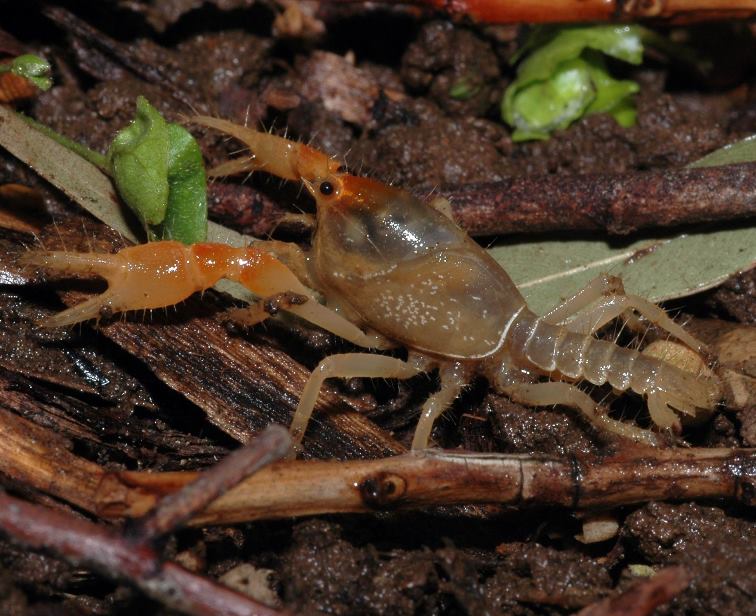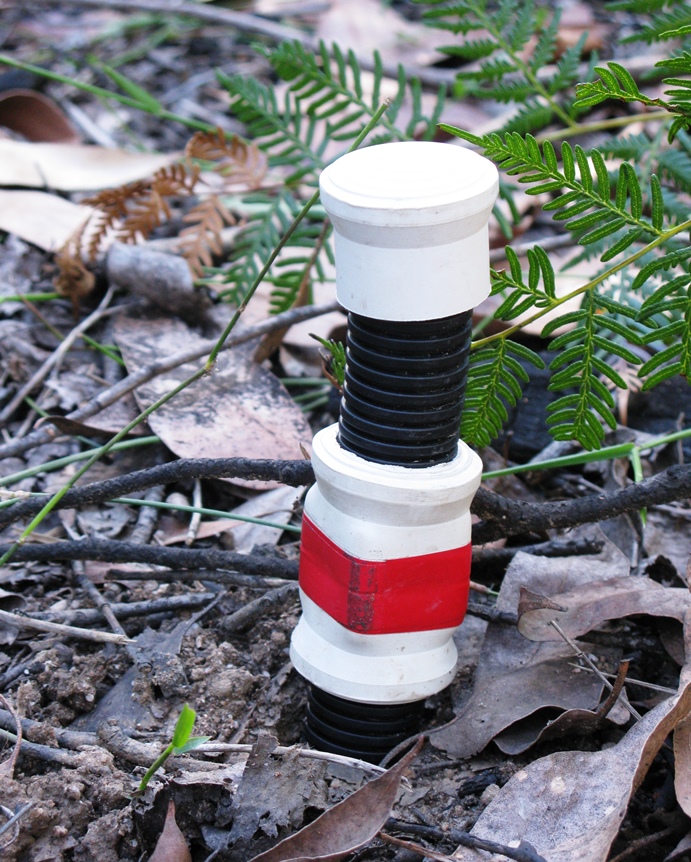Burrowing crayfish are principally subterranean and spiny crayfish are cryptic and occupy complex in-stream habitat. Consequently, both are difficult to survey and information about their distribution at the local scale is uncertain. Accurate knowledge about species distributions underpins good management decisions.
The crayfish fauna in Gippsland is diverse including both freshwater spiny crayfish (genus: Euastacus) and burrowing crayfish (genus: Engaeus), of which ten species are listed as threatened. Five of these species occur within areas affected by the 2009 wildfires. This project, which is funded by the Victorian and Commonwealth governments 'Rebuilding Together – Statewide Bushfire Recovery plan', resulted in the development of more effective survey methods for these crayfish. Trials were conducted in burnt and unburnt regions to determine possible effects of fire on the crayfish.
Burrowing crayfish trials involved the development of novel, non-destructive sampling techniques and spiny crayfish sampling trials used traps and multiple pass electrofishing. Burrowing crayfish trials of two trap designs, one a slight modification of previously developed design, revealed that the modified trap was more effective at capturing crayfish. Spiny crayfish sampling trials demonstrated that two electrofishing passes were required to maximise chances of detection in a short time frame. The new survey techniques will significantly improve the accuracy of assessments associated with future disturbances, minimise the need for destructive sampling and lead to more effective management of both genera in forested and urban landscapes.

For more information contact: phil.papas@delwp.vic.gov.au or david.bryant@delwp.vic.gov.au
The following article, report and fact sheet are available:
- Bryant, D., Crowther, D. and Papas, P. (2014) Engaeus Erichson (Decapoda:Parastacidae) capture using two version of a norrocky trap. Australian Zoologist 37(2):199-192
- Improving survey methods and understanding the effects of fire on burrowing and spiny crayfish in the Bunyip and south Gippsland catchments: Black Saturday Victoria 2009 - Natural values recovery program (PDF, 2.1 MB)
(accessible version (RTF, 513.4 KB)) - Fire impacts on burrowing and spiny crayfish fact sheet (PDF, 547.0 KB)
(accessible version (RTF, 27.5 KB)) - Fire impacts and survey methods for burrowing and spiny crayfish fact sheet (PDF, 335.5 KB)
(accessible version (DOC, 460.0 KB))
Page last updated: 28/03/25
